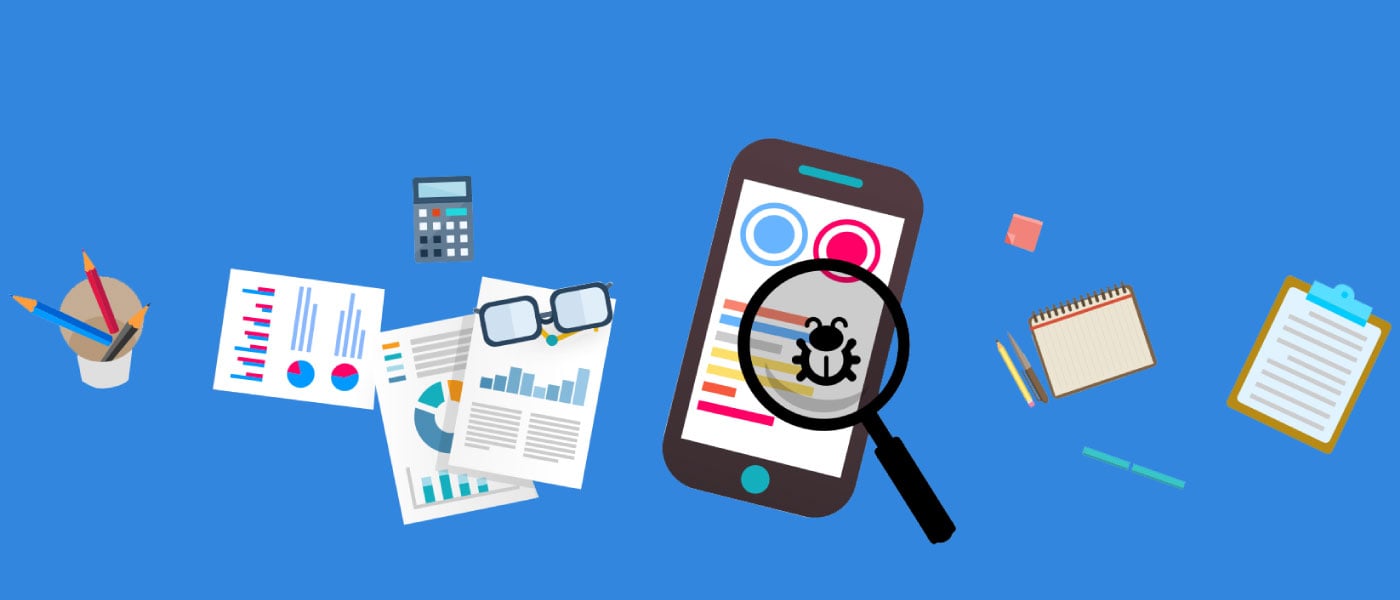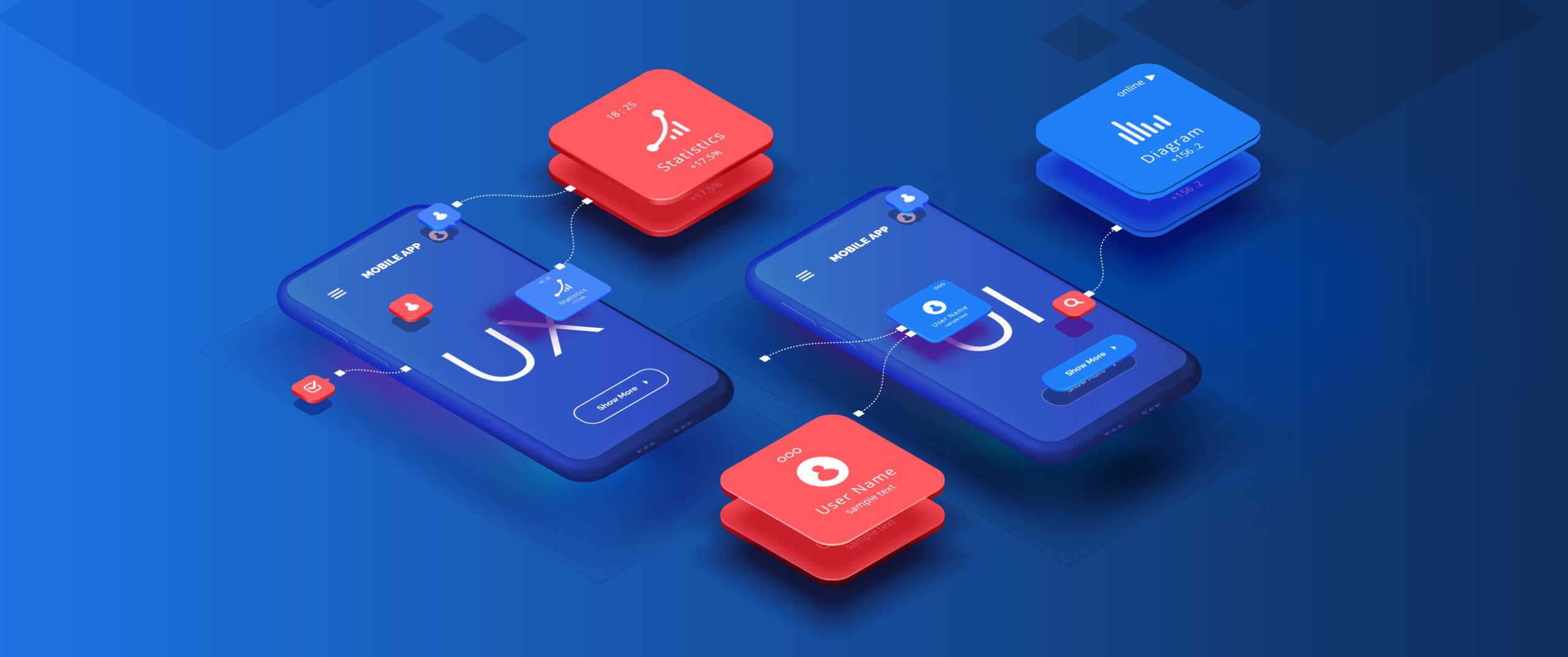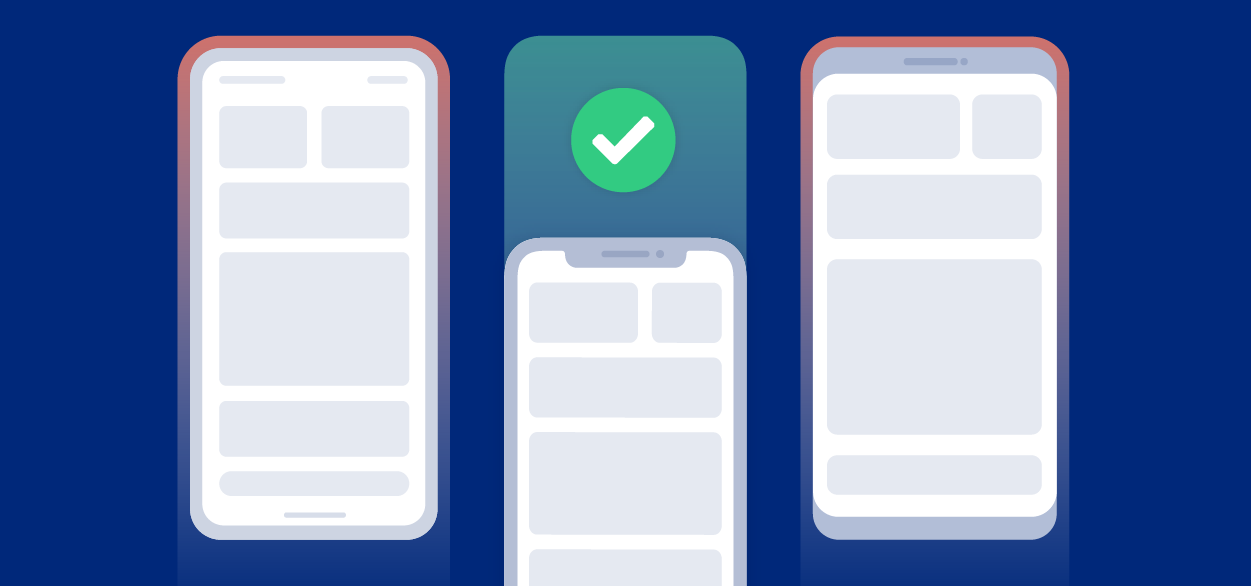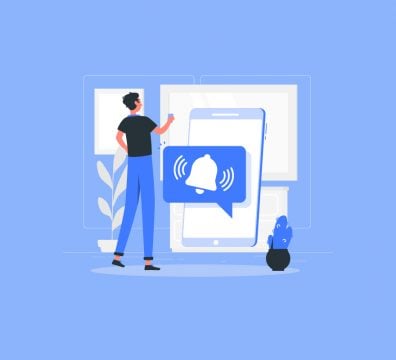Statista reports over 5 million mobile apps available in app stores, catering to every imaginable need. In this rapidly intensifying app market, the uniqueness of your app’s idea, quality content, and user interface design, along with its reliability, are crucial for success. Missing any of these elements can lead to wasted time and money. While no one can guarantee an app’s success, focusing on its performance and usability can significantly increase its chances. This blog aims to present a concise mobile application testing checklist, outlining essential steps and recommended tools to ensure your app stands out.
Table of Contents
Get Started with Mobile Application Testing
Embarking on mobile app testing is a strategic step to ensure your application delivers a flawless user experience and operates without hiccups across various devices and platforms. We will guide you through the essentials of initiating the testing process, from understanding the definition and types of tests to be conducted to selecting the right tools and methodologies.
What Is Mobile App Testing?
Mobile App Testing is a process used to assess the functionality, user-friendliness, performance, and compatibility of mobile applications. This testing, which can be automated or manual, is essential in verifying that the app meets all user expectations and market requirements before its release.

Mobile application testing encompasses a variety of tests to ensure an app’s overall quality and functionality. Each type targets specific aspects of the app’s performance and user experience, we will dig deeper into these aspects of the application testing process in the next section:
- Functional Testing: This is the core of application testing, focusing on the app’s functional requirements. It ensures that each app feature operates according to the defined specifications. Testers carry out actions that an end-user would and observe if the app behaves correctly, often involving inputting data, navigating through the app, and checking the handling of user commands.
- Usability Testing: Usability testing gauges how user-friendly, intuitive, and easy to navigate an app is. It’s typically performed from an end user’s perspective to ensure the app is straightforward to use and that the user journey is logical and efficient. This includes assessing the app’s design elements, aesthetics, and the overall satisfaction a user experiences.
- Performance Testing: Performance testing looks at how the app behaves under certain conditions. It includes assessing loading times, responsiveness, resource usage, and stability under various loads. It’s crucial to ensure that the app maintains its performance even when it’s being used by a large number of users simultaneously or when running on devices with lower specifications.
- Compatibility Testing: With the plethora of mobile devices, operating systems, and screen sizes, compatibility testing verifies that the app works as intended across all targeted devices and platforms. This type of testing is essential for identifying device-specific issues and ensuring a consistent user experience no matter what device or OS the app is accessed from.
- Security Testing: In a world where data breaches are common, security testing is indispensable. It involves examining the app for vulnerabilities that could be exploited to gain unauthorized access to sensitive data. This type of testing ensures that user data is securely stored and transmitted and that the app has adequate protection against potential threats.
- Localization Testing: For apps that will be released in multiple countries, localization testing ensures that the app is adapted appropriately for different languages, regions, and cultures. This doesn’t just cover language translation but also checks date and time formats, currency conversions, and adherence to local regulations and cultural nuances.
- Installation Testing: This testing checks the initial installation process, ensuring that the app installs properly, has all necessary files, and does not corrupt any system. It also covers updates and uninstallation processes, ensuring they occur without errors and that updates do not adversely affect app performance or data integrity.
Popular Mobile App Testing Tools and Frameworks
There is an array of mobile app testing tools and frameworks that cater to different testing needs. These tools help streamline the testing process, making it easier to identify issues and ensure a high-quality product. Here’s a list of some popular ones:
- Appium
- Selenium
- TestComplete
- Espresso
- Robotium
- MonkeyRunner
Choosing the right tools and frameworks for mobile application testing is a nuanced decision that hinges on several factors, including the types of testing required, the platforms (iOS, Android, or both) your app will support, and your development team’s familiarity with the tools. You should consider whether the tool supports automation, which can significantly speed up the testing process and enhance its accuracy.
Moreover, compatibility with your app’s tech stack, the ability to integrate with your current development pipeline, and the flexibility to adapt to different testing scenarios are also critical considerations. The cost of tools and the return on investment are essential factors as well; open-source tools can offer cost savings, but sometimes at the expense of comprehensive support or advanced features found in commercial products.
The choice also depends on the tool’s capacity to simulate a wide range of user interactions and network environments, and whether it offers real-time insights and reporting. Ultimately, the goal is to select tools and frameworks that will streamline the testing process, provide thorough coverage, and ensure the delivery of a high-quality product to the user.
Mobile Application Testing Checklist
Performance of the Mobile Application
Most of the time application developers consider creating a mobile application testing checklist as an idea in priority. Mobile developers have to suffer from tough timetables and deadlines. Therefore, for them, testing the performance of an application has the least importance.
This outlook is totally wrong in light of the fact that your application’s performance is the primary factor that will affect the client’s choice of keeping your application on their telephones or uninstalling it. Likewise, a poor app experience straightforwardly prompts lost income. This obviously characterizes the importance of an application’s performance in the mobile application testing checklist.

Such type of testing is fundamental in the mobile application testing checklist. It is to guarantee that the application performs acceptably under certain performance requirements, for example, access by countless clients or the removal of a key infrastructure part like a database server.
Thus, when you are finished building up an application, try to check your application’s performance and measure it in terms of Device Performance, Server/API Performance, and Network Performance.
Performance testing puts the spotlight on the functional domain just as toward the back of an application. Most basic KPIs in performance testing incorporate the utilization of GPS, energy utilization, and other battery-defecting features, memory usage, and network data transfer capacity use, just as whether an application works appropriately under excessive burdens or not.
- The application’s capacity to conduct heavy workload:
Performance testing licenses product owners to measure the performance of the system when the quantity of clients or activities performed by them increases on the mobile application. As the eventual results, the analyzers will come to realize the response time and the amount of resource utilization at the application’s pinnacle point.
- The exhibition of the application under critical conditions.
- The effect of hardware on the application’s performance:
Through performance testing, the mobile application analyzers will ensure that low CPU usage or little worker stockpiling will not keep the application from operating in accordance with the essentials.
- The capacity of the applications:
You will have the choice to discover whether the current setup is prepared for organizing the arrangement of metrics.
- The performance of the application on the convention level:
While carrying out performance testing, a mobile application analyzer will get a realistic simulation of genuine traffic, make a load profile, and measure the response time.
Mobile Application’s Functionality
Functional testing is one of the essential mobile application testing techniques that guarantees every one of the features of your application functions as they should. It is fundamental to evaluate whether your application functions are ready to be released or not.
Such software testing guarantees that the application is working effectively. This kind of testing centers around the principle reason and stream of the application, guaranteeing that every one of its features is responsive and meets specifications.

All things considered, while doing functionality testing, you ensure that your application functions well from the point of view of an end client. Mobile phones accompany express equipment features like stockpiling, camera, screen, and sensors like accelerometer, geolocation contact sensors, or surrounding light. All of them should be examined in different conditions and settings.
Likewise, there is a chance of various interpretation situations while an application is working like incoming messages, calls, or other notifications. The primary goal of functionality mobile application testing is to spot possible mistakes and unexpected issues that may come in the event of an interruption.
Furthermore, One ought not fail to remember that mobile applications are used by individuals who do not generally do ordinary things. For example, what happens when a client randomly jabs at an application screen or information about some unreasonable data? To test such circumstances, monkey testing is one of the mobile application testing tools that are by and large used which goes under functionality testing.
Usability/UX Mobile Application Testing
In the recent mobile application development market, designers need to offer higher benefits and quality to clients and basically optimize the mobile application testing checklist by testing applications for utility.
It should be taken ahead to guarantee that the mobile application is responsive, instinctive, and engaging enough to draw in clients and meet well their demands and necessities.
Known as user experience testing, usability testing checks how easy to understand and use the application is regarding convenience and intuitiveness. Ideally speaking, usability testing revolves around the whole application-driven user experience with insights of knowledge that incorporate the identification of bugs and recommendations for approaches to improve the client experience, both in and out of the application.

Designers, marketers, and product individuals all need to test whether the end-to-end application-driven experience is elite. Keeping that in mind, it is significant for application usability testing to be finished with genuine individuals, on genuine devices to rapidly distinguish and fix usability issues prior to application release.
Here are some of the pivotal aspects of usability mobile application testing:
- Incorporates procedures that will be used in the testing framework.
- Have a task list that presents and depicts various activities and practices to be followed.
- It is all-outfitted with the important office, condition, and devices for testing.
- It ought to have clearness of the territory and degree of testing.
- It contains a segment on investigation and detailing for conveying test results.
Other mobile application testing approaches for usability testing include:
- The smart arrangement of convenience test contents and criticism surveys.
- Combination of usability questionnaires inside test cycles so analyzers comprehend the usability testing guidelines, can get to the online surveys, and give criticism as a component of their testing tasks.
- Results assessment and feedback summary with actionable bits of knowledge and recommendations for improving the overall client experience.
Compatibility Mobile Application Testing
While usability testing pays regard to the look, feel, and comfort, compatibility testing concentrates on choosing whether the hardware and software together permit the application to work suitably.
Compatibility testing is a kind of non-functional testing that is critical to guarantee your mobile application chips away at different working frameworks, gadgets and applications, network conditions, and specific inside hardware details.
It is performed to approve that your application proceeds true to form over the mixture of programs and mobile phones that your clients will use to get to your application.
According to each exploration, there are various kinds of issues identified with compatibility that influence client experience, including:
- Content – A full site, when in doubt, does not fit on a little device.
- Navigation – Mobile navigation may require assorted route methodologies rather than the full-size website.
- Size – Smaller screens require texts and objects to be assessed appropriately.
- Feature and Functions – Component behavior is not generally predictable on the different devices and OS.

Specifically speaking, you should know whether:
- The application is viable with various operating systems and their different adaptations (iOS, Android, Windows, and so forth).
- The application performs well with shifting operating systems and their various versions (data transmission, working pace, and so on).
- The application is viable with various programs (Google, Firefox, Safari, and so forth).
- The application is viable with various devices (screen size, information stockpiling, and so forth).
Your compatibility mobile application testing checklist ought to be adaptable and case-based. The instruments/strategies you pick ought to be needed depending on the circumstance. Meanwhile, it is furthermore sure to change your methodology as per the functional testing circumstance.
Security Check
The rise of digitalization has made security testing amazingly urgent. A totally functional yet insecure application can provoke serious outcomes. 80% of clients would “uninstall an application because of security”. Thus, it is necessary for you to comprehend and prioritize security testing when creating a checklist for mobile application testing.
From Tinder to travel applications, a few applications request client’s very personal data. On the off chance that yours are collected, you should ensure the confidentiality, authenticity, and integrity of the application.

Accordingly, the application ought to consistently be examined depending on:
- Confidentiality: Are authentic encryption methods used to secure private data?
- Authorization: Is the application requesting access to simply the fundamental data on your device?
- Validation: Is the application confirming a client properly prior to giving him the information access?
- Web Services: Is the application communicating with web services using secure conventions?
- Storage: Is the information that is put away locally on the device fittingly encrypted?
While performing security testing, access security should be your first need to ensure the safety of your business and your customers. It joins authorization and validation. You decide who will get the accessibility and how much access is allowed to a validated person.
This guides you in ensuring that your information stays protected from outside and inside breaks. Recruit an analyzer who is knowledgeable about the work. The correct individual will produce various client accounts, including different positions.
At the point when you are finished with availability testing, you ought to likewise test the security level of your application’s information. Genuine security testing measures are expected to ensure the practicality of information storage. However, you need to test first to check the vulnerabilities.
A specialist in mobile application development can test the information base for a wide scope of basic information, for instance, client accounts, charging, passwords, and others. Different functionalities that require testing are the archive moves and installments. These things again require intensive testing with a detailed mobile application testing checklist.
Installation Testing
Also called implementation testing, installation testing is performed to check whether the product is introducing and uninstalling appropriately.
Furthermore, installation testing guarantees refreshes are additionally continuous and error-free. This incorporates understanding what occurs if a client does not update an application.
Manual Mobile Application Testing
Mobile application testing is a complex process including different systems and diverse ranges of abilities.

Developers utilize manual testing to guarantee that the end result truly is correct as proposed. With a particular role to carry out, manual testing is utilized to investigate use cases that may not be too self-evident – master human analyzers working in short intervals to swarm the application can convey uncommon results.
Testing the Localization
From making an interpretation in numerous languages to converting it into local monetary forms and adhering to local guidelines and lawful necessities, it is critical to guarantee the application is open and usable in a wide range of business sectors. That is the place where localization testing comes in.

Customers regularly avoid past applications whose graphical or UI components are skewed by their way of life, language, or device openness – they expect flawless encounters that are localized for their requirements and preferences.
Simultaneously, localization testing keeps on being a test as half of the mobile application analyzers come up with a shortage in the necessary test coverage and access to the resources expected to test localization.
Major Challenges of Mobile Application Testing
The realm of mobile application testing presents several significant challenges that can impact the delivery of a high-quality product:
- Device Fragmentation: One of the most daunting challenges is device fragmentation. With a multitude of devices, each with different screen sizes, resolutions, operating system versions, and hardware capabilities, ensuring consistent app performance across all possible combinations can be an arduous task. This situation requires a comprehensive testing strategy that includes a wide array of devices to cover as many user scenarios as possible.
- Security Parameters: Security is another major concern. Each app must adhere to stringent security protocols to protect user data against breaches and vulnerabilities. Testing for security means verifying encryption methods, data protection techniques, and compliance with both industry standards and regional regulations, which can be complex and demanding.
- User Preferences and Demands: Keeping pace with user preferences and demands also poses a challenge. The mobile app market is customer-driven, and users’ expectations for intuitive design, personalization, and feature-rich applications necessitate a dynamic testing approach. Testers must constantly adapt their methods to evaluate the app’s ability to meet evolving user requirements.
- Network Issues: The variability of network conditions is another hurdle. Mobile apps must function seamlessly across different network strengths and types, from 4G LTE to 5G, and Wi-Fi to metered data connections. Testing an app’s performance in diverse network environments is critical to ensure that users have a consistent experience regardless of their internet access quality.
- Unpredictable Circumstances: Lastly, unpredictable circumstances, such as unexpected user behavior or real-world usage conditions, can be difficult to simulate during testing. These include handling interruptions like phone calls, notifications, and the multitude of other apps that could be running in the background. Preparing for these scenarios requires imaginative and extensive testing to catch and address issues before they reach the end user.
Addressing these challenges requires a robust testing framework, a deep understanding of the market and user base, and a commitment to continuous testing and improvement.
Final Thought
In conclusion, we want to provide the most fundamental mobile application testing checklist below so that you can get the most overview of what needs to be double-checked before launching a mobile application:
- Installation testing (regardless of whether the application can be introduced in a sensible measure of time and with the required rule).
- Uninstallation testing (regardless of whether the application can be uninstalled in a sensible measure of time and with the required rule).
- Network test cases (validation of whether the network is performing under the required load or not, regardless of whether the network can support every one of the important applications during the testing process).
- Check Unmapped keys.
- Check the application sprinkle screen.
- Proceeded with keypad section during interrupts and other circumstances such as network issues.
- Techniques that manage existing applications.
- Charger impact while an application is running in the background.
- Low battery and high-performance demand.
- Exhaustion of battery while an application is being performed.
- Utilization of battery by application.
- Check Application results.
If you wish for more useful updates like this from us, please consider subscribing to our newsletter right below.











